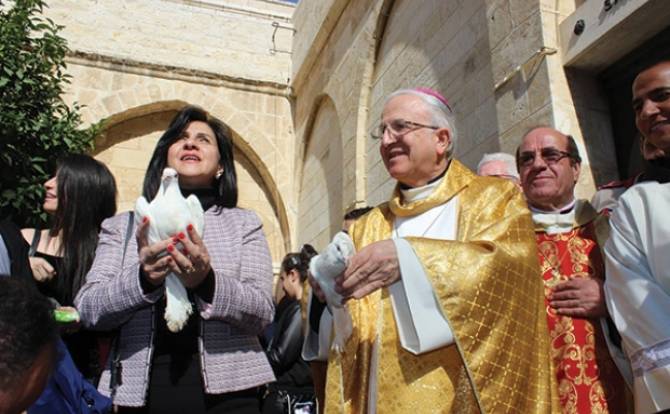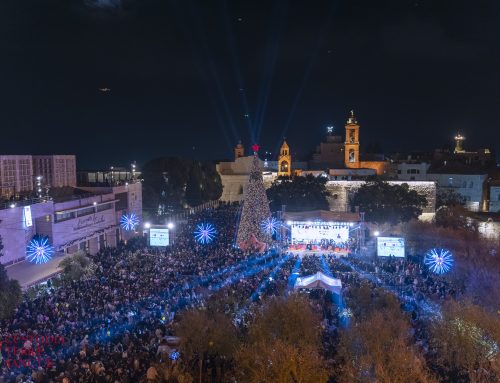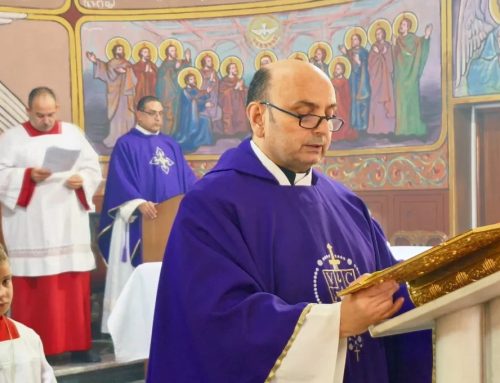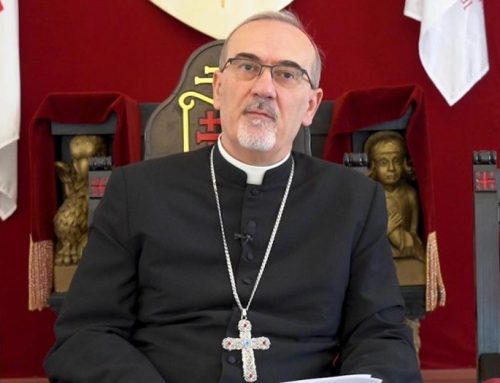In Palestine, the land which yearns for peace and justice, I live the realities of my Palestinian nation; realities of hegemonic occupation, systematic land confiscation, brutal wars, and an Apartheid Wall. This has been the national saga that my ancestors have lived, we are living, and our grandsons will seemingly have to live. In Bethlehem, the City of the Cradle and the Capitol of the Nativity, we live a life that unceasingly oscillates between reassurance and anxiety, tranquility and panic, gain and loss, and mostly between hope and despair – in fact, that is true for all of us in Palestine. However, and despite all, the hope that there will be better moments, better days, and a better future has always dominated my heart and mind. This hope stems from the intrinsic and holy message of my city, Bethlehem. Every year, since I became the mayor of Bethlehem in 2012, I have sent out Christmas messages that celebrate the birth of our Lord and thus the rebirth of hope, love, and peace. It is purely paradoxical: I send messages of peace from the city of peace that has to live without peace. Bethlehem is besieged with ever-growing settlements and a horrendous Wall that not only walls in the city, but also its spirit, its faithful, and the message of peace itself. Our youth are leaving to seek better lives outside their walled city, our elders are still living the dream of peace and justice, and pilgrims come to the city to pray in its Holy Grotto – but we can only speculate whether they remember to pray for Bethlehem. In the midst of these realities, I wonder whether I should be hopeful, desperate, hopefully desperate, or desperately hopeful. As a faithful, I have to to remain hopeful and lead my life as a woman, a mother, or a mayor with adamant hope and resilience.
From my mayoral office that faces the Nativity Church and its Grotto, I look at Bethlehem from a steadfast angle. I look at the Bethlehem of yesterday, today, and tomorrow and aim at challenging all obstacles in order to achieve sustainable development for the city that is located in a governorate whose area includes eighty-two percent of what is called Area C, a zone that is fully under Israeli administrative and security jurisdiction and control. Bethlehem city and governorate are witnessing a natural demographic growth that adamantly needs infrastructure facilities such as water supply, waste water plants, and other services. Unfortunately, Area C stands like a concrete block in the face of natural growth, of development, and of dignified living.
In the last three years, my vision in leading the city has evolved around efficient use of land, better services, infrastructure projects, an urban master plan, a strategic seven-year plan for the city and the municipality, youth empowerment, touristic development, revitalization of our connection with our citizens who live in the Diaspora, Bethlehem as a World Heritage Site, and mostly Bethlehem as a global holy city. This global holy entity of Bethlehem is the nucleus of my vision: a city that is open for all, with all, to all. All who respect and appreciate Bethlehem and its message. When peace was brought into the world through the birth of our Lord in Bethlehem, it was not brought for Bethlehemites only, but for all of humanity. It is a grace that we need to cherish and preserve. True peace can never prevail in the world as long as the city of peace does not live in peace. However, the un-walling of Bethlehem and all that it represents need a serious reflection on the true meaning of Bethlehem and its global and human significance. We remain hopeful that the star of Bethlehem will be forever sparkling, Bethlehem’s bells ringing, and its faithful forever singing Glory to the Lord, Glory to justice, hope, love, and PEACE.
Source: Higher Presidential Committee of Churches Affairs in Palestine Website






